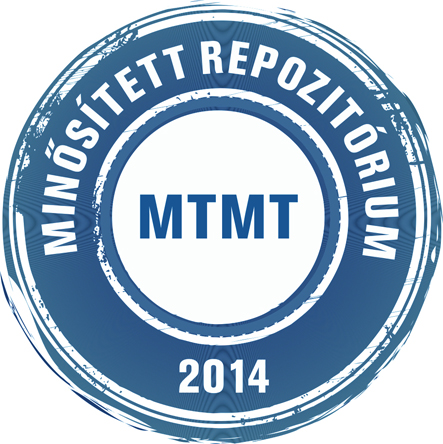Jakó Mária
Ultrasonographic, pharmacologic and pathologic examination of the fetoplacental circulation.
Doktori értekezés, Szegedi Tudományegyetem (2000-).
(2018)
(Kéziratban)
Előnézet |
PDF
(disszertáció)
Download (4MB) | Előnézet |
Előnézet |
PDF
(tézisfüzet)
Download (7MB) | Előnézet |
Előnézet |
PDF
(tézisfüzet)
Download (7MB) | Előnézet |
Absztrakt (kivonat) idegen nyelven
There are several known risk factors for placental insufficiency and intraurerine growth restriction (IUGR) but the exact pathophysiology is not clear yet. We examined the microvascular changes of placental and umbilical cord vessels in IUGR and healthy pregnancies where neither mathernal nor fetal conditions could justify the growth restriction and it derived from placental insufficiency. We also investigated the microvascular changes elicited by hyperglycaemia in gestational diabetes. Conventional two-dimensional (2-D) ultrasound evaluation includes the morphology, anatomy, location, implantation, anomaly, color/power and pulsed Doppler ultrasound assessment of the placenta. The three-dimensional (3-D) reconstruction of the placenta gives information about 3-D placental vasculature and placental blood flow. The quantitative 3-D power Doppler (3-DPD) histogram analysis by Virtual Organ Computer-aided Analysis (VOCAL) program provides more details concerning qualitative assessments of the vascularisation and blood flow. A prospective case-conrol study was carried out in order to examine placental vascularisation using 3-DPD technique with VOCAL program in the second and third trimester of pregnancies complicated by gestational diabetes mellitus (GDM) and intrauterine growth restriction and we compared our data with those of the normal controls. After delivery we collected the placenta and umbilical cord, dissected vessel segments and performed tissue bath examinations via adding vasoactive agents in different doses and dosage patterns. All samples underwent pathological and histological examinations to find histopathologic alterations in the vessels that can justify the altered fetal growth. We compared our ultrasonographic data to pharmacological and pathological findings. A consecutive recruitment of pregnant women was carried out between January 2014. and May 2017. at the Department of Obstetrics and Gynecology, Szeged, Hungary. a, In the first study set, pregnancies complicated by GDM and pregnancies complicated by IUGR were compared to control ones. The tested vasoactive agents were oxytocin and desmopressin in logarithmic, non-comulative dosage. b, In the second study set, pregnancies were divided into two groups: non-pathological control group and IUGR group. The tested vasoactive agent was serotonin in logarithmic cumulative dosage with and without ketanserin incubation. In case of IUGR and diabetic patients, significant deterioration of the 3-DPD indeces could be seen compared to the control group. Placental vascularisation in pregnancies complicated by IUGR is lower than in diabetic pregnancies and in controls. The difference is smaller, but significant regarding the flow index, meaning the amount of blood flowing through one vessel exceeds the control value compensating hypovascularization to a certain level. In GDM pregnancies despite of the general enlargement low placental flow is measured because of microvascular occlusions and calcification of the villi. Oxytocin elicited no significant changes in vascular tone in any of the vessels. Desmopressin, a partial agonist of the previous ligand, did not cause any significant change in vascular tone either. The contraction elicited by serotonin was stronger in IUGR umbilical arteries and the values of maximal contraction correlated with the values of the systolic/diastolic velocity ratio. The effect of ketanserin was more pronounced in IUGR umbilical cord arteries and veins. Regarding the placental vessels, both the contraction to serotonin and the effect of ketanserin was diminished in IUGR pregnancies related to healthy contols. In conclusion, 3-DPD assessment of placental vascularisation may provide new insights into normal and abnormal fetoplacental hemodynamics. Regarding the pharmacokinetic results, neither oxytocin, nor vasopressine have an active receptor on the placental and umbilical vessels. The reactivity to serotonin correlates with the umbilical artery velocymetry, thus suggesting that it has a role in regulating vascular tone. The difference between the IUGR and the control group in the effect of ketanserin can be explained by a higher relative density of 5-HT type 2 receptors in the study group. The pathologic examination revealed no vascular morphological alterations in the study groups. Samall, sporadic lesions could be observed in normal pregnancies, but the appearance of two or more alteration was characteristic to IUGR cases. Our results suggest that serotonin has a role in the physiology of fetoplacental vasoregulation and its alterations can be observed in IUGR pregnancies. More studies are necessary to determine other vasoactive agents that actively regulate these vessels and show alterations in pathologic pregnancies. The possible therapeutic effect of ketaserin, should be investigated in IUGR pregnancies.
| Mű típusa: | Disszertáció (Doktori értekezés) |
|---|---|
| Publikációban használt név: | Jakó Mária |
| Magyar cím: | Fetoplacentális keringés ultrahangos, farmakológiai és patológiai vizsgálata |
| Témavezető(k): | Témavezető neve Beosztás, tudományos fokozat, intézmény MTMT szerző azonosító Bártfai György DSc, SZTE ÁOK Szülészeti és Nőgyógyászati Klinika 10006734 Surányi Andrea habil., SZTE ÁOK Szülészeti és Nőgyógyászati Klinika 10011837 |
| Szakterület: | 03. Orvos- és egészségtudomány > 03.02. Klinikai orvostan |
| Doktori iskola: | Klinikai Orvostudományok Doktori Iskola |
| Tudományterület / tudományág: | Orvostudományok > Klinikai orvostudományok |
| Nyelv: | angol |
| Védés dátuma: | 2018. november 29. |
| EPrint azonosító (ID): | 10001 |
| A mű MTMT azonosítója: | 30322545 |
| doi: | https://doi.org/10.14232/phd.10001 |
| A feltöltés ideje: | 2018. nov. 22. 15:04 |
| Utolsó módosítás: | 2022. okt. 17. 12:51 |
| Raktári szám: | B 7039 |
| URI: | https://doktori.bibl.u-szeged.hu/id/eprint/10001 |
| Védés állapota: | védett |
Actions (login required)
 |
Tétel nézet |

 Repozitórium letöltési statisztika
Repozitórium letöltési statisztika Repozitórium letöltési statisztika
Repozitórium letöltési statisztika







